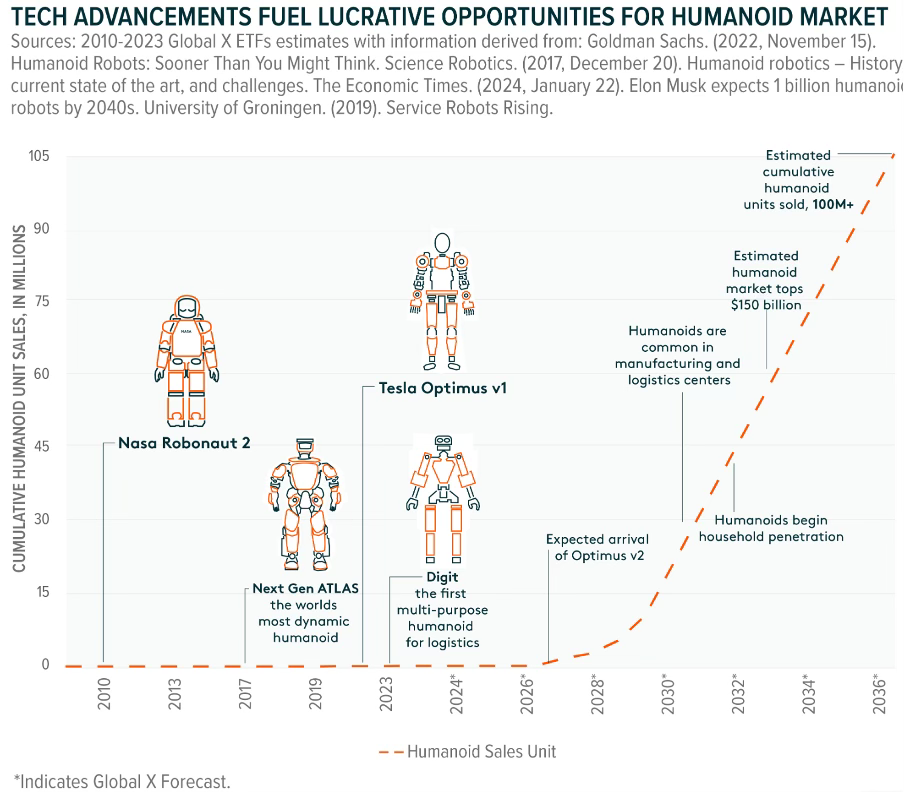Humanoid robots - Seeyoulater, rather than terminator?
Human-like robots have long been a SciFi trope. They are coming closer to reality, but possibly not at the pace, scale or scope some analysts predict.

I just came across a 2023 video showing the 40 year development of what’s now Boston Dynamics’ humanoid Atlas robot.
It’s both an impressive illustration of technological development while also grounding in showing how long some technologies take to mature.
What also struck me is that Atlas, despite its impressive agility, doesn’t yet have a strong industry use case. Unless as an actor in parody videos. However, Boston Dynamics now says that it is partnering with Hyundai to develop a manufacturing role.
But the research and development has undoubtedly been beneficial to other Boston Dynamics robots, and no doubt to other humanoid robot makers. There are a few around now, with some of them listed in The RobotReport.
Most of these appear targeted towards logistics and manufacturing applications, with humanoid robots perceived as more adaptable than legless robots, and better able to replace (or support) human workers in some “dirty, dull, or dangerous” tasks.
A recent Goldman Sacks analysis suggests
“Using the technology available today, Goldman Sachs Research forecasts significant demand for humanoid robots in structured environments like manufacturing. That could include use cases such as electric vehicle assembly and component sorting. Industry research indicates that about 70% of manufacturing in China is already done by machinery and automation, while only 20% is handled by manual labor and 10% by management. Since humanoids are more flexible and capable of adapting to complex terrain, our analysts believe they can grow the market for industrial automation.”
There is also a concern in some sectors that there will not be enough human workers to build stuff in the future.
And, of course, there are whisperings of the miltary developing humanoid robot armies. Though, there is already enough cause for concern (here too) about current military uses of robots.
I’ll leave sexbots and artificial women out of this for the time being.
Beware of simplistic forecasts
However, the emergence of humanoid robots is prompting excitable extrapolations of their future market size:
That’s just exponential fantasy, with numbers pulled out of tin man hats, and wild assumptions about utility and economics.
Goldman Sacks, one of the sources for the Global X figure, in fact gives a broad range of sales possibilities, none of which reach the 100 million+ mark in the next decade that Global X forecast.
The technology advisory firm Gartner puts “smart robots” - those using machine learning or other processes that free them from programmed actions - near the “peak of inflated expectations” it its Hype Cycle.
Many futurists, technology companies, venture capitalists, and journalists are apt to take Gartner’s assessments at face value. That’s unwise. While it is useful in highlighting some of the issues new technologies may experience it isn’t a good predictor. Michael Mullany described Gartner’s Hype Cycle as a “hero’s journey” narrative, rather than a deterministic tool. He analysed 17 years of Hype Cycles (and some developments not included in Gartner’s assessments) and found many of the technologies included didn’t follow their cycle.
More adaptable robots
However, humanoid robot R&D is illustrating some interesting advances. For example, Agility Robotics is using Large Language Models (a form of generative artificial intelligence) to get its Digit robot to understand what a verbal instruction means.
And Stanford University is teaching its HumanPlus robot to mimic more fluid human actions by “shadowing” their movements in real time using a camera. This includes putting on a shoe, piano playing, boxing and table tennis motions.
Stanford’s research is not about creating piano playing robots, or table tennis champions, but in exploring how to best develop fine motor skills and motions.
Another 4 decades?
There is a widespread expectation that humanoid robots will be a common feature in society in the coming decades. Technologically the advances have been impressive, but I’m not yet convinced that they will make economic sense, or gain social acceptance outside of specific uses for another, perhaps, 40 years.
Humanoid robots could also be a distraction - designed to fill current expectations of future tasks and jobs, rather than us considering a quite different way of doing things without bipedal electronic helpers. These days a smart phone is able to fill many of the functions of C-3PO.






